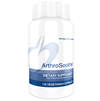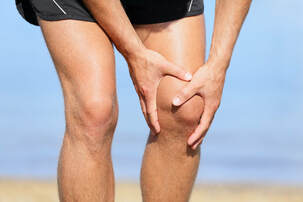What's the difference between facials, PRP Microneedling, Botox, Synthetic Fillers, and PPP Filler?1/21/2024 Let’s talk about the treatment options like facials, microneedling, PRP injections, PPP injections, synthetic fillers, and Botox. These are all in-office procedures that target various skin concerns.
What is the difference between all these and which ones might you need? Here's a brief overview of each: 1. Facials: - Description: Facials are skincare treatments performed by a licensed esthetician. They typically involve cleansing, exfoliation, extraction, massage, and the application of various skincare products. - Purpose: Facials aim to improve the overall health and appearance of the skin by addressing issues such as acne, dryness, and uneven texture. 2. PRP Microneedling: - Description: PRP (Platelet-Rich Plasma) microneedling involves the use of a device with tiny needles to create micro-injuries in the skin. Platelet-rich plasma, derived from the patient's blood, is then applied to stimulate the healing process. - Purpose: This procedure promotes collagen production, helps move lymph, improves skin tone and texture, and can be used to address fine lines, wrinkles, and scars. This treatment especially shines for the treatment of acne scars. 3. Botox Injections: - Description: Botox is a neurotoxin that is injected into specific muscles to temporarily relax them. It is commonly used to reduce the appearance of wrinkles and fine lines caused by repetitive muscle movements. - Purpose: Botox injections are primarily used for cosmetic purposes to smooth out dynamic/superficial wrinkles like forehead lines, crow’s feet, and “elevens” (glabellar lines). 4. Synthetic Fillers: - Description: Synthetic fillers, such as hyaluronic acid-based fillers, are injected into specific areas of the face to add volume and reduce the appearance of deeper wrinkles. - Purpose: Fillers are used to restore volume, plump lips, and soften facial lines. They can also be used for contouring and enhancing specific facial features. (Please note: At this time, we are not offering synthetic fillers at Elevated Natural Health.) 5. PPP Fillers: - Description: PPP (Platelet Poor Plasma) fillers are autologous fillers made similar to PRP (by collecting a sample of blood from the patient) and then heating it to denature the albumin protein in the blood. This converts the plasma into a thick, viscous gel-like substance (made entirely of one’s own blood). This substance is then injected into the deeper wrinkles or areas of deficit on the face (hollowing). Once injected, it dissolves over a period of several week, but, in it’s place, new collagen forms. This effect can look more natural than that of synthetic fillers - Purpose: PPP Filler is a more natural option compared to synthetic fillers. It does not cause as significant of a change in volume the way synthetic fillers can. The bottom line is that it's important to note that the choice of procedure depends on individual needs, preferences, and the specific concerns being addressed. Consultation with a qualified and experienced medical professional is crucial to determine the most suitable treatment for each person.
0 Comments
by Dr. Jessica Corbeille Harris, ND
I’ve been getting the question a lot lately – “Why does PRP work for healing my joints and also for treating my sagging skin?” So, I thought I’d share a little more about Platelet Rich Plasma (PRP) therapy. For a PRP treatment, we collect a sample of the patient's own blood, process it to collect growth factors, combine it with nutrients and ozone gas, and then inject it into the damaged tissues (tendons, ligaments, bone, skin, etc.). PRP is loaded with concentrated growth factors from your body’s own immune system which is really the magic in the medicine. The healthier a patient is to begin with, the “better” their PRP product is, which means the better results they will get from a PRP treatment. In the case of joint pain, the growth factors in the PRP help the body to heal and regenerate soft tissues (like tendons and ligaments) which helps to stabilize the joint and therefore decrease the pain. Often, people think they have sore and/or tight muscles which is causing their pain. In reality, the muscles have become sore and tight to compensate for weak tendons and ligaments. So, by treating the damaged tendons and ligaments to stabilize the joint, we can actually treat the pain! With wrinkled and sagging skin, there is a similar loss of soft tissue – collagen, in this case. The growth factors from the PRP are injected here to support the collagen matrix under the skin, thus providing more of a scaffold for the top layer of the skin to hold on to. This ultimately decreases the wrinkles, “sagging”, scaring, and the dreaded “bags” under the eyes. For hair regeneration, the growth factors in the PRP work to help the hair follicles regenerate thus promoting hair growth in areas where the hair follicle had degenerated. The injections themselves also work to improve circulation to the area which naturally increases hair growth as well. PRP, although wonderful and capable of dramatic results, is an advanced technique requiring special equipment and training by the practitioner. Always consult with your practitioner about their specific methods, ingredients, training and other details of the procedure to gain a full understanding of how their product and method can help you. If you're interested in getting started with PRP treatments today, send us an inquiry from our Contact page today or give us a call at 206-566-7225. by Dr. Jessica Corbeille Harris, ND  I see many patients every day who struggle with pain. Sometimes joint pain, sometimes back or neck pain, sometimes muscle pain, and sometimes headaches. One thing these pains all have in common is they are symptoms. And symptoms are always a message from the body to tell us something is not quite right. When the body has all the nutrients, sleep, happiness, support, and water that it needs, the body is free of symptoms. Let’s talk today about one foundational part of your body’s needs – adequate nutrition, and this starts at the dinner table. So let’s say the body isn’t getting the right nutrients it needs. Without the proper nutrients, it cannot make enzymes work properly. Without properly working enzymes, certain things like soft tissue repair cannot happen properly. When the soft tissues are not repaired, other tissues have to work harder (i.e. muscles), and this can lead to the symptom we experience as PAIN. This means that one of the ways we can treat pain before we even use treatments like prolotherapy or PRP is by supporting the soft tissue repair. And to support soft tissue repair, we need the proper nutrients. Research has shown a few nutrients to be especially important in healing and repair of soft tissues, like collagen, for example. Some of these key nutrients are protein, vitamin C, zinc, copper, and manganese.
Please note that the list above is not all-inclusive (other nutrients can be very important for treatment pain too – i.e. magnesium, calcium, MSM, etc.). Diet is a great place to start when it comes to treating pain though. It’s essential that a person is getting the proper nutrition BEFORE we start treatment with prolotherapy, PRP, or other fancy treatment options to ensure your body has the building blocks it needs to make the treatment most effective. Here’s one of my favorite products for pain and healing: ArthroSoothe by Designs for Health. You can find it on our online dispensary or at our clinic. Please email us or give us a quick call today if you are ready to start talking about treating your pain! by Dr. Jessica Corbeille Harris, ND, CES by Dr. Jessica Corbeille Harris, ND  What is prolotherapy? Prolotherapy is a type of regenerative joint therapy. By this, I mean that it is a therapy that helps your connective tissues to heal and regenerate thus supporting your joints better. There are a variety of prolotherapy types and all different cocktails of combinations of nutrients that are injected and called, “prolotherapy.” In the case of sore joints and sometimes even sore muscles, often it is the connective tissues – the tendons and ligaments – that are the true root cause of the pain…NOT the “tight” muscles! The connective tissue is not highly vascular, so it does not get good blood supply or delivery of nutrients. Thus, it is easily injured, strained, torn, or degenerated. When the connective tissue is injured, it cannot do its job – so other tissues are recruited to do the work – the muscles and fascia. The muscles and fascia then become tight and are overworked as they work to keep the joints supported and the body moving properly. Overtime, we experience this instability as muscle soreness and pain. With prolotherapies, we are aiming to treat these injured, strained, torn, and/or degenerated tissues and joints with nutrients (like dextrose) and sometimes stronger things like growth factors (in the case of PRP/platelet rich plasma) or even stem cells. Once the connective tissues heal, it takes the workload down for the muscles, so the muscles can go back to just doing their normal job of getting the body to move – not also stabilizing and keeping the body together too. Why does prolotherapy help knee pain? If you’ve injured your knee, chances are you’ve sprained, torn, or otherwise caused extra strain on some of the connective tissues. This causes the muscles around the knee to tighten, as discussed above, to keep your femur (thigh bone) and tibia and fibula (shin bones) together. The muscles get sore and eventually we experience pain. If we can treat the injured connective tissue by testing for and treating the connective tissues (i.e. ACL, MCL, meniscus, etc.), then the muscles can relax and go back to doing their normal job. Does Prolotherapy help other joints too? Absolutely. If there’s a soft tissue injury, prolotherapy can help! Am I a good candidate? People that tend to do the best with prolotherapy are those that generally take good care of their bodies in the first place. Generally speaking, this includes people who participate in moderate exercise 3 or more days per week and eat a whole-foods based diet low in inflammatory foods (like sugar, alcohol, and preservatives) and high in vegetables and fruit. The best way to know if you have connective tissue injury and if you would benefit from prolotherapy is to have an initial consultation with your prolotherapy doctor. What does the treatment look like – is it a “one-shot-wonder”? Dr. Corbeille can determine on the first visit if you are a candidate and if you likely have connective tissue injury. You are welcome to bring imaging results if you have them, though they are not always necessary. Typical treatment plans will be for 3-6 treatments usually at 4-6 weeks apart. Sometimes Dr. Corbeille will recommend PRP or other nutrient additives, depending on your particular condition and overall health. You can expect improvement gradually as you complete the treatments such as improved range of motion, improved function, and hopefully less pain. Dr. Corbeille will always re-evaluate at the end of the treatment plan to determine the next steps for you. _____ Stay tuned for a future post regarding which supplements to start taking now to improve your joint and connective tissue health! |
AuthorThe Doctors at ENH post to this page regularly with new health information, home remedies, and other interesting tidbits. Archives
May 2024
Categories
All
|
DISCLAIMER: THIS WEBSITE DOES NOT OFFER MEDICAL ADVICE. THE CONTENT OF THIS ELEVATED NATURAL HEALTH WEBSITE AND ANY LINKS INCLUDED ARE INTENDED ONLY FOR EDUCATIONAL AND INFORMATIONAL PURPOSES OR TO DESCRIBE THE CLINICS PRODUCTS AND SERVICES. THIS WEBSITE AND ITS CONTENT ARE NOT INTENDED TO PROVIDE PROFESSIONAL MEDICAL ADVICE, DIAGNOSE THE HEALTH CONDITION OF ANY INDIVIDUAL OR SUBSTITUTE FOR PROFESSIONAL GUIDANCE IN THE ADMINISTRATION OF ANY TREATMENT. YOU SHOULD ALWAYS SEEK THE ADVICE OF A LICENSED PHYSICIAN OR OTHER QUALIFIED HEALTHCARE PRACTITIONER REGARDING ANY PERSONAL CONCERNS AS TO SYMPTOMS, MEDICAL CONDITIONS, OR THE USE OF ANY PRODUCTS. SUCH COUNSEL SHOULD NOT BE DISREGARDED OR DELAYED BASED UPON ANY INFORMATION CONTAINED WITHIN THIS WEBSITE. DR. JESSICA CORBEILLE-HARRIS, ND AND DR. MCKENZIE J TIMMER, ND EACH HAVE A DOCTORATE IN NATUROPATHIC MEDICINE AND ARE LICENSED NATUROPATHIC PHYSICIANS IN THE STATE OF WASHINGTON. ANY REFERENCE TO THE PRACTICE OF NATUROPATHIC MEDICINE DOES NOT APPLY IN STATES WHERE NATUROPATHIC MEDICINE IS NOT LICENSED.
Proudly powered by Weebly


 RSS Feed
RSS Feed